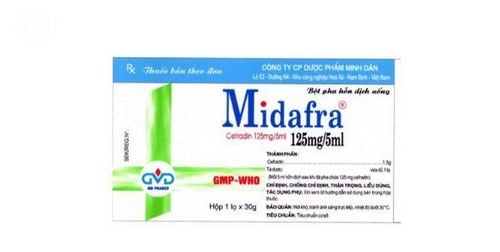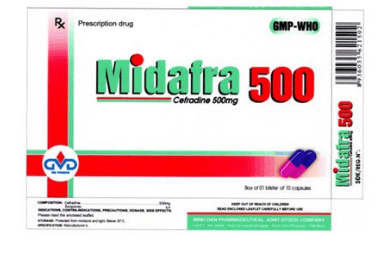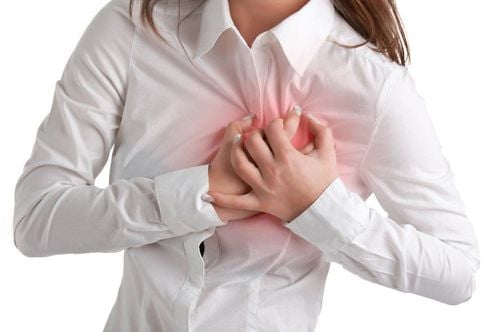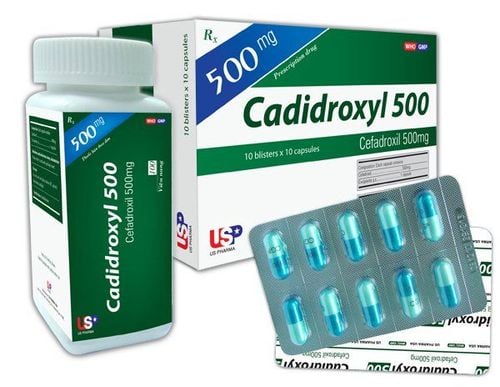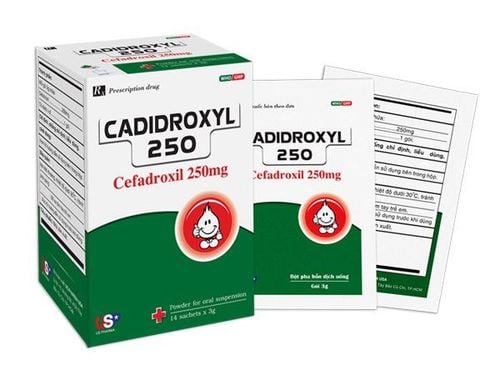This is an automatically translated article.
The article is professionally consulted by Master, Doctor Truong Thanh Tam - Pediatrician - Department of Pediatrics - Neonatology - Vinmec Danang International General Hospital. Dr. Tam has 15 years of experience working in the field of Pediatrics, having participated in many national and international scientific conferences on pediatrics. Her strength is in the diagnosis and treatment of hematologic pathology - Pediatric oncology, resuscitation, pediatric emergency.And resident doctor Duong Van Sy - Department of Pediatrics - Neonatology - Vinmec Hai Phong International General Hospital.
Pneumonia includes lobar pneumonia and bronchiolitis inflammation, lobar pneumonia disease course is usually milder than inflammatory bronchial disease. Lobar pneumonia if detected and treated promptly, the disease will go away after 7 to 10 days.
1. What is lobar pneumonia?
Lobar pneumonia is an inflammatory condition that damages the lung parenchyma including the alveoli, alveolar sacs, alveolar ducts, connective tissue and terminal bronchioles.2. Causes and favorable factors for lobar pneumonia
2.1 Causes Bacteria: The most common are pneumococcus, other bacteria such as streptococcus, staphylococcus, hemophilus influenza Virus: Influenza, measles, pertussis.. Parasites. 2.2 Predisposing factors for disease Cold weather, change of seasons, diseases that often occur in winter People with weakened bodies, immunocompromised people, the elderly, children Alcoholics, tobacco addicts People who have to lie down for a long time, long-term treatment. Chest deformity such as kyphosis, scoliosis Having obstructive lung disease such as COPD, bronchial asthma. Suffering from upper respiratory tract diseases such as nasopharyngitis, sinusitis, tonsillitis
3. Signs of lobar pneumonia
The most common cause of lobar pneumonia is pneumococcal bacteria, typical symptoms of pneumococcal lobar pneumonia:Clinical symptoms
The disease appears suddenly with a high fever of 39-40 degrees Celsius , fever with chills, rapid pulse, red face, irritability, after a few hours, shortness of breath, sweating, purple lips, rapid breathing, possibly lethargy, coma For the elderly, symptoms are usually less More intense Fever may be accompanied by convulsions, especially in young children, but CSF is normal. Chest pain: A typical symptom that often appears, pain on the injured side, pain increases when the patient lies on the side of the lesion. Dry cough at first, mild cough then cough with thick rust-colored sputum (characteristic of pneumococcal lobar pneumonia), intermittent cough Gastrointestinal disorders vomiting, nausea, abdominal distension, abdominal pain. Examination: In the first hours of auscultation, the alveolar murmur is found to decrease on the affected side, pleural rubbing can be heard. At the time of full examination, the sound is increased, percussion is cloudy, the alveolar murmur is reduced or absent, and the sound is heard. blow pipe. Paraclinical symptoms
Cardiopulmonary X-ray: Seeing a opacity of a lobe or a lung segment, with a triangular base facing outward, apex turning inward towards the hilum. Laboratory tests: WBC count increased, neutrophils increased. Sputum culture identifies bacteria, usually pneumococcus.
4. Disease progression
If not detected and treated, after a week, the patient's symptoms increase, then the fever subsides, sweating, the patient's cough is relieved, chest pain is relieved, but on lung examination, the physical symptoms are still there. Chest radiographs of lung lesions persist for several weeks. The disease is less fatal, but there are still cases of shock symptoms: shortness of breath, cyanosis, rapid pulse, low blood pressure, sometimes leading to death due to cardiovascular collapse, pulmonary edema...
5. How to treat lobar pneumonia?
5.1 Principles of treatment
Antibiotic treatment according to antibiotic chart Rehydration and electrolytes Treatment of accompanying symptoms Combine with diet: Eat liquid easily digestible, drink lots of water, eat lots of fruit.5.2 Specific treatment
Antibiotics: Selected according to the results of the antibiotic chart Mild pneumonia with oral drugs Moderate and severe pneumonia using parenteral drugs Commonly used antibiotics such as: Amoxicillin, amoxicillin + clavulanic acid (augmentin), penicillin, cephalosporin antibiotics 2nd and 3rd generation, quinolone antibiotics such as ciprofloxacin... Oral rehydration and electrolyte replacement with oresol or intravenous route with 0.9% nacl solution. Symptomatic treatment: Reduce chest pain and reduce fever with paracetamol 10-15mg/kg body weight, fever below 38.5 degrees Celsius, apply warm compresses in the groin and armpits. If you have a lot of chest pain, you can take Nsaid anti-inflammatory pain relievers. If severe form has a lot of difficulty breathing, cyanosis, small rapid pulse, low blood pressure... give oxygen, use high-dose antibiotics, if the pulse collapses, give intravenous fluids and use vasopressors such as dopamine, dobutamine.6. How to prevent disease
Thorough treatment of bacterial infections in the ENT region, acute exacerbations of chronic bronchitis. Eat well to improve your health and avoid infection. Limit alcohol, do not use harmful substances such as tobacco, pipe tobacco... Keep the body warm, especially the neck and chest area in the cold season, the time of season change. Fully vaccinated against viruses, pneumococcal bacteria... Lobar pneumonia has now been treated with very effective antibiotics, but if not detected and treated in time, it can leave serious complications. dangerous complications, proactively recognize the signs of the disease and ways to prevent the disease to limit the risk of disease and detect the disease early.As a key area of Vinmec Health system, Pediatrics Department always brings satisfaction to customers and is highly appreciated by industry experts with:
Gathering a team of top doctors and nurses in Pediatrics : consists of leading experts with high professional qualifications (professors, associate professors, doctorates, masters), experienced, worked at major hospitals such as Bach Mai, 108.. Doctors All doctors are well-trained, professional, conscientious, knowledgeable about young psychology. In addition to domestic pediatric specialists, the Department of Pediatrics also has the participation of foreign experts (Japan, Singapore, Australia, USA) who are always pioneers in applying the latest and most effective treatment regimens. . Comprehensive services: In the field of Pediatrics, Vinmec provides a series of continuous medical examination and treatment services from Newborn to Pediatric and Vaccine,... according to international standards to help parents take care of their baby's health from birth to childhood. from birth to adulthood Specialized techniques: Vinmec has successfully deployed many specialized techniques to make the treatment of difficult diseases in Pediatrics more effective: neurosurgery - skull surgery, stem cell transplantation. blood in cancer treatment. Professional care: In addition to understanding children's psychology, Vinmec also pays special attention to the children's play space, helping them to have fun and get used to the hospital's environment, cooperate in treatment, improve the efficiency of medical treatment.
Please dial HOTLINE for more information or register for an appointment HERE. Download MyVinmec app to make appointments faster and to manage your bookings easily.





